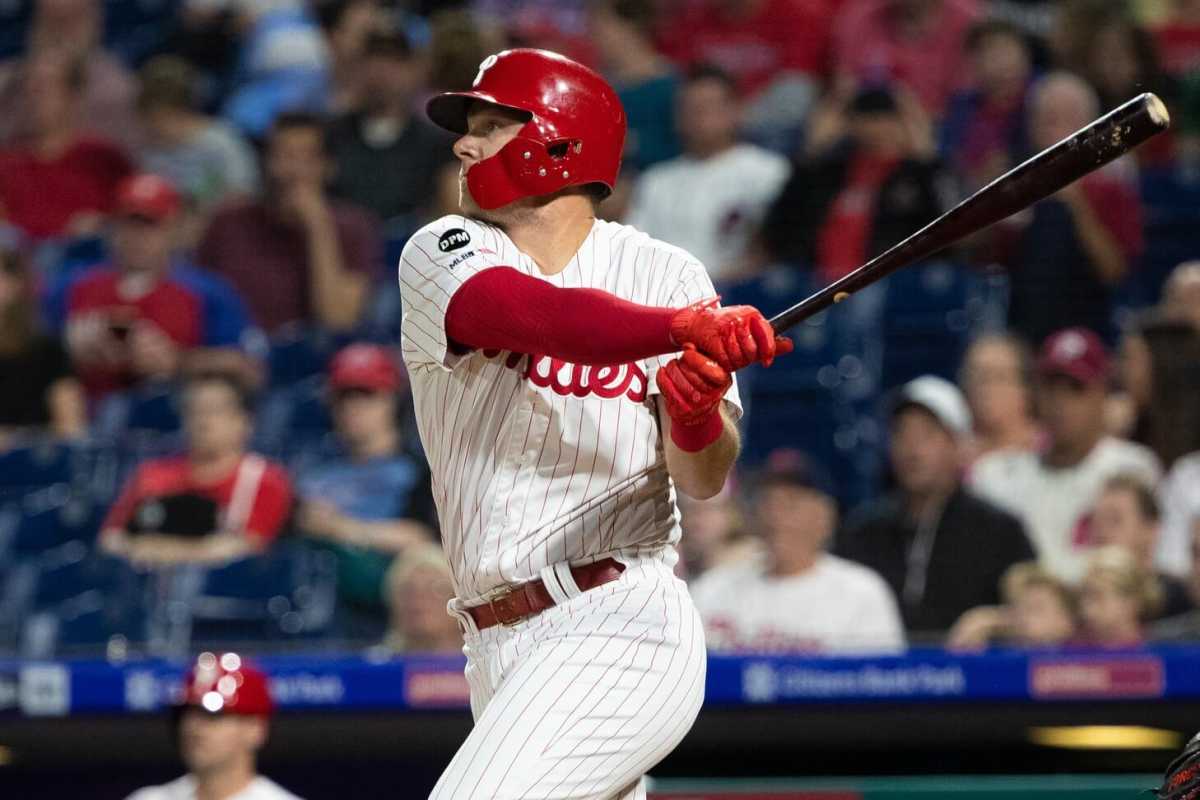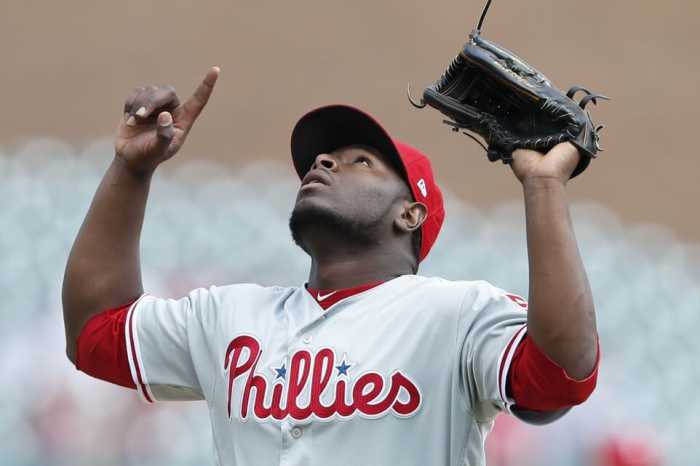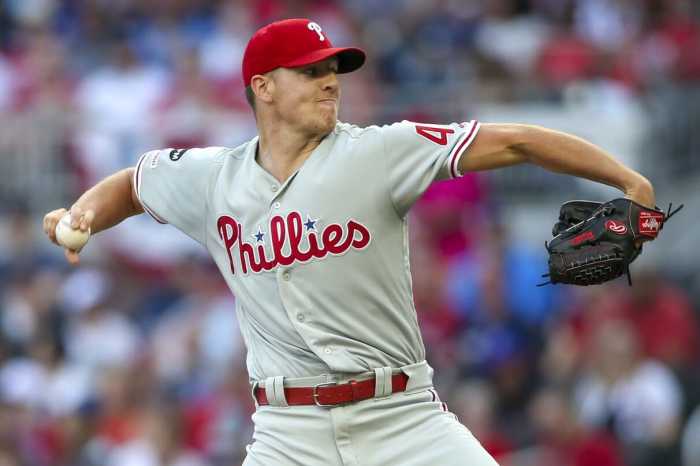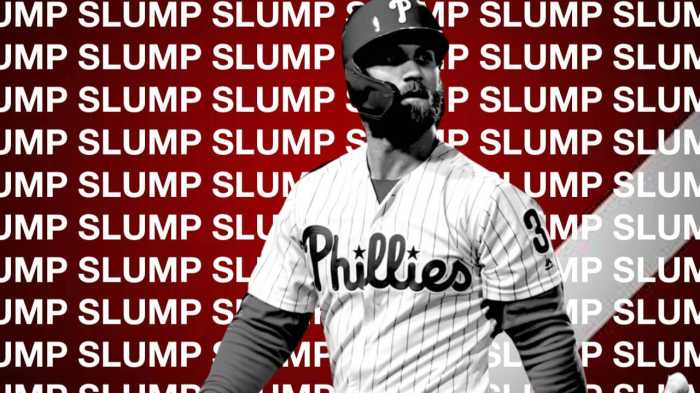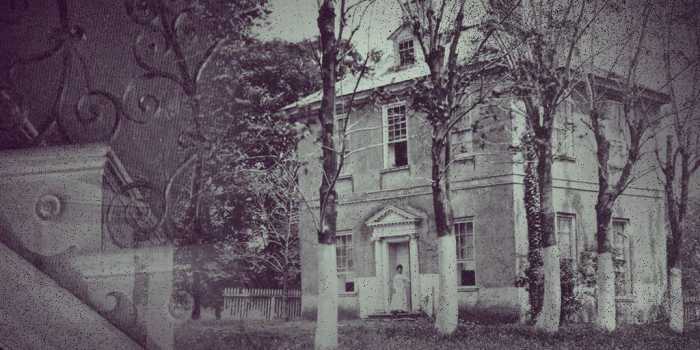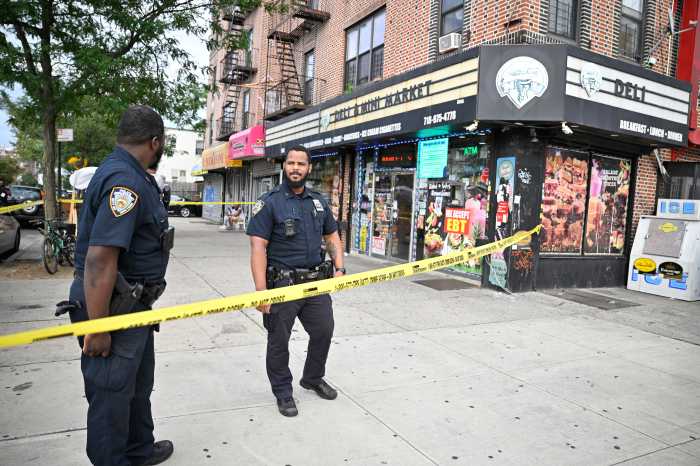Three seasons ago, Rhys Hoskins took the league by storm after making his debut for the Phillies in the second half of the season. Ranking in the top ten at No.6 on the Phillies prospect list at the time of his promotion to the big leagues, expectations were high for the talented first baseman when he debuted in an early August game against the rival Mets.
Hoskins had a rather quiet day at the plate in that game, going 0-2 with a walk in the loss. Still, he was all smiles following his highly anticipated debut.
“It was exciting,” he stated after his debut. “Didn’t go as well as I had hoped, but that’s baseball.”
His debut may not have been one for the record books but it was one of the few nights his bat went silent during his rookie season. The former fifth-round pick would go on to add a few pages to the history book before his inaugural campaign came to an end, too.
After a dormant 0-12 start to begin his big league career, Hoskins went full nuclear to round out 2017. In 22 games in August, Hoskins hit 11 home runs and had a 1.149 OPS- including a nine-game stretch between Aug. 19 and 27 where he hit eight home runs and drove in 19 runs.
His damage wasn’t limited to just August, either, as he exploded for another home run spree in September. The powerful first basemen swatted six homers in six games between Sept. 8 and 14 and finished with seven overall in September.
All in all, the rookie slugger blasted 18 home runs and drove in 48 runs in just 50 games(!) that season- shattering all kinds of records along the way.
Hoskins became the fastest player to reach 16 home runs (32 games) in the big leagues. He also broke the rookie record for the most home runs in a season amongst players who made their debut after August 1st, previously held by Ted Williams. As if that weren’t enough, he also became the third-fastest player to collect 34 RBIs at 32 games, behind generational talents Ted Williams and Albert Pujols.
Hoskins would go on to finish fourth in a tight Rookie of the Year race that season, despite playing less than a third of the season.
After serving as one of the few bright spots in an otherwise lackluster Phillies season, it’s no surprise that people were eager to see what the future had in store for Hoskins after his 162-game pace of 58 HR, 156 RBI in 2017.
Unfortunately, the encore performance wasn’t quite as spectacular for the young slugger. Although he was still able to crank out an impressive 34 home runs in his sophomore season, Hoskins saw his slugging, batting average, and on-base percentage numbers dip significantly.
His struggles at the plate seemed to stem from changes made on the other side of the diamond, as Hoskins was asked to man left field primarily upon the arrival of 1B Carlos Santana. Having only played the position scarcely collegiately and in the minors, Hoskins was understandably a bit overwhelmed in the outfield.
Across 135 games in left field, the sophomore slugger committed 6 errors, most among left fielders and fourth-most among outfielders in the National League. His -3.6 defensive wins above replacement were the lowest total in all of MLB last year. Additionally, his -24 runs were tied for 10th-worst since the metric was introduced in 2003 by Baseball Info Solutions. Yikes.
As I alluded to earlier, it appeared that his defensive woes took its toll on his confidence as a player and eventually led to some struggles at the plate as well.
“I think comfort is a big thing, right?” Hoskins said. “I’ve had a lot more repetition there, obviously, playing there coming up through the minor leagues. Fortunately, the big man was set to return to his natural position of first base after Carlos Santana was traded to Seattle as part of the haul for Jean Segura.
“I think just handling the ball a lot more — whether it’s pick-offs, fielding ground balls — just being in the rhythm of the game is going to be a lot easier throughout the course of the year, Hoskins stated, “I think I’m most excited about that.”
Now back in a comfortable situation defensively and with superstars Bryce Harper and J.T Realmuto backing him up in the lineup, Hoskins was expected to mirror his dominant rookie form once again.
Unfortunately, that ideal never quite came to fruition. After batting an impressive .278 with 13 homers and 42 RBIs through the first three months of his third campaign, Hoskins seemed to hit a wall in June- the beginning of a slump he’d never quite break out of in 2019. The once-feared offensive threat batted a measly .200 from the first of June onward and his lack of production was a key reason for the Phils second-half collapse.
Without the defensive woes to blame this time around, Hoskins’ struggles at the plate were a lot more alarming last season. He was often far too patient at the plate- routinely passing on balls he could put in play- and seemed to lack the swagger he brought to the plate as a 24-year-old rookie.
Still, Hoskins did show some promise. He nearly batted 30+ home runs for the second consecutive campaign (29 HRs) and drew a career-high 116 walks. He also proved to be quite durable, suiting up for all but two games for the Phillies.
Despite consecutive down years at the plate, Hoskins still carries loads of potential offensively and is talented enough to be the third option or better in a playoff-caliber lineup. To do this, though, he’ll likely need to become astute with the innovative teachings of new Phillies hitting coach Joe Dillon.
Dillon, who was lauded as “the best assistant in baseball” by Washington hitting coach Kevin Long during his time with the WS Champion Nationals, is as forward-thinking as it gets at his position and should be a welcome addition in Philly.
I wrote about what Dillon brings to the table as a coach yesterday, namely his focus on improving cognitive skills to help his players make wise split-second decisions, something that Hoskins could greatly benefit from. Hoskins is an incredibly patient batter with excellent plate vision, as evidenced by his 116 walks and top 15 finishes in both walk BB/PA and BB/K in 2019.
He struggles mightily at pulling the trigger when presented with a hittable pitch, however. The exercises implemented by Dillon greatly improve the hitter’s ability to track a pitch all the way through and also helps slow the game down a bit for them mentally. His methods have also been credited for keeping players productive throughout the season and not just in spurts.
A boost in these areas should reap tremendous rewards for the power-threat Hoskins and hopefully provoke a resurgence for the 27-year-old slugger. Revitalizing Hoskins is no small order, but is a worthwhile endeavor the Phillies have to take to compete, and one that Dillon seems to have the blueprint to pull off.
Mandatory Credit: Bill Streicher-USA TODAY Sports

